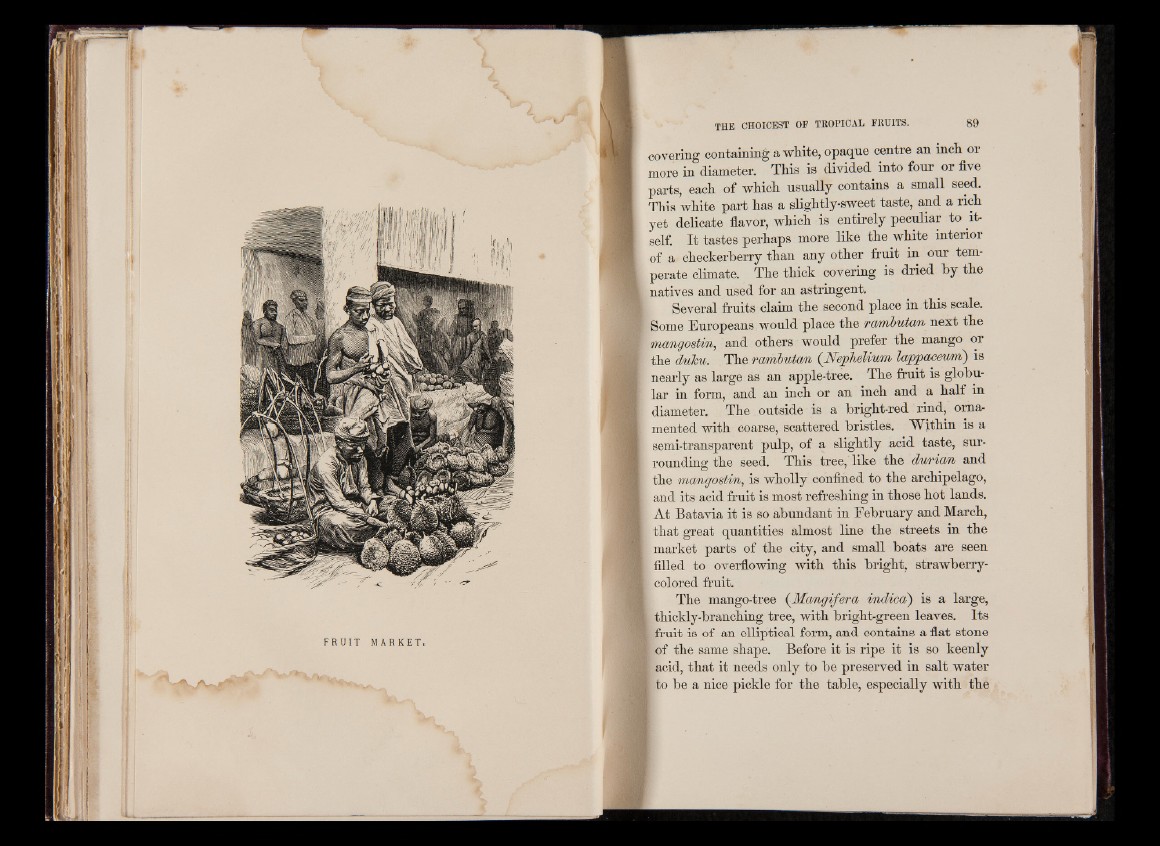
covering containing; a white, opaque centre an inch or
more in diameter. This is divided into four or five
parts, each of which usually contains a small seed.
This white part has a slightly-sweet taste, and a rich
yet delicate flavor, which is entirely peculiar to itself.
It tastes perhaps more like the white interior
of a checkerberry than any other fruit in our temperate
climate. The thick covering is dried by the
natives and used for an astringent.
Several fruits claim the second place in this scale.
Some Europeans would place the rambuta/n next the
mangostin, and others would prefer the mango or
the (Mm. The rambutcm (NepTieMum lappacewm) is
nearly as large as an apple-tree. The fruit is globular
in form, and an inch or an inch and a half in
diameter. The outside is a bright-red rind, ornamented
with coarse, scattered bristles. Within is a
semi-transparent pulp, of a slightly acid taste, surrounding
the seed. This tree, like the d/u/rio/n and
the ma/ngostim,, is wholly confined to the archipelago,
and its acid fruit is most refreshing in those hot lands.
At Batavia it is so abundant in February and March,
[ that great quantities almost line the streets in the
[ market parts of the city, and small boats are seen
; filled to overflowing with this bright, strawberry-
i I colored fruit.
The mango-tree (Mangifera indica) is a large,
I thickly-branching tree, with bright-green leaves. Its
ft fruit is of an elliptical form, and contains a flat stone
1 of the same shape. Before it is ripe it is so keenly
■ acid, that it needs only to be preserved in salt water
■ to be a nice pickle for the table, especially with the